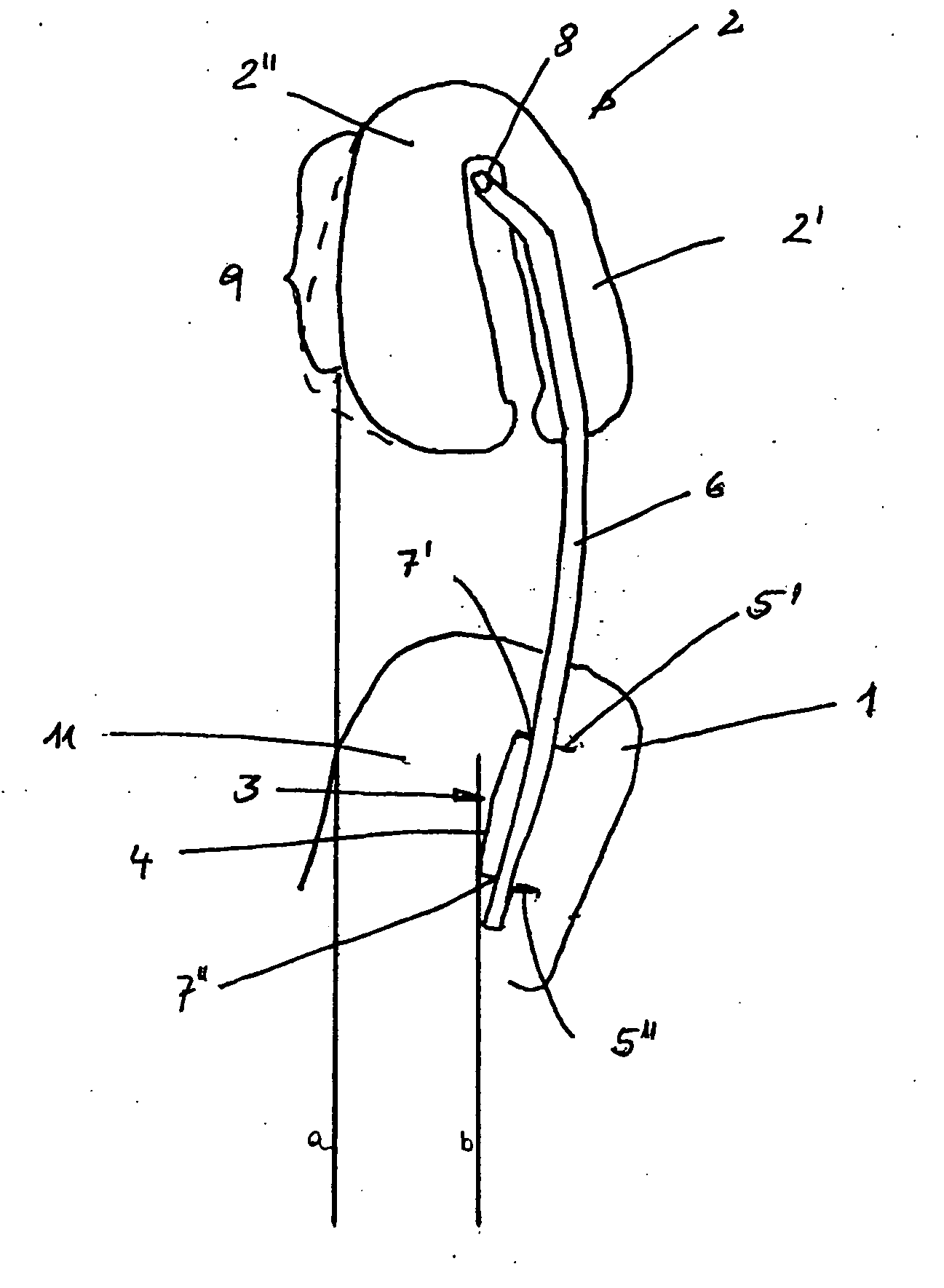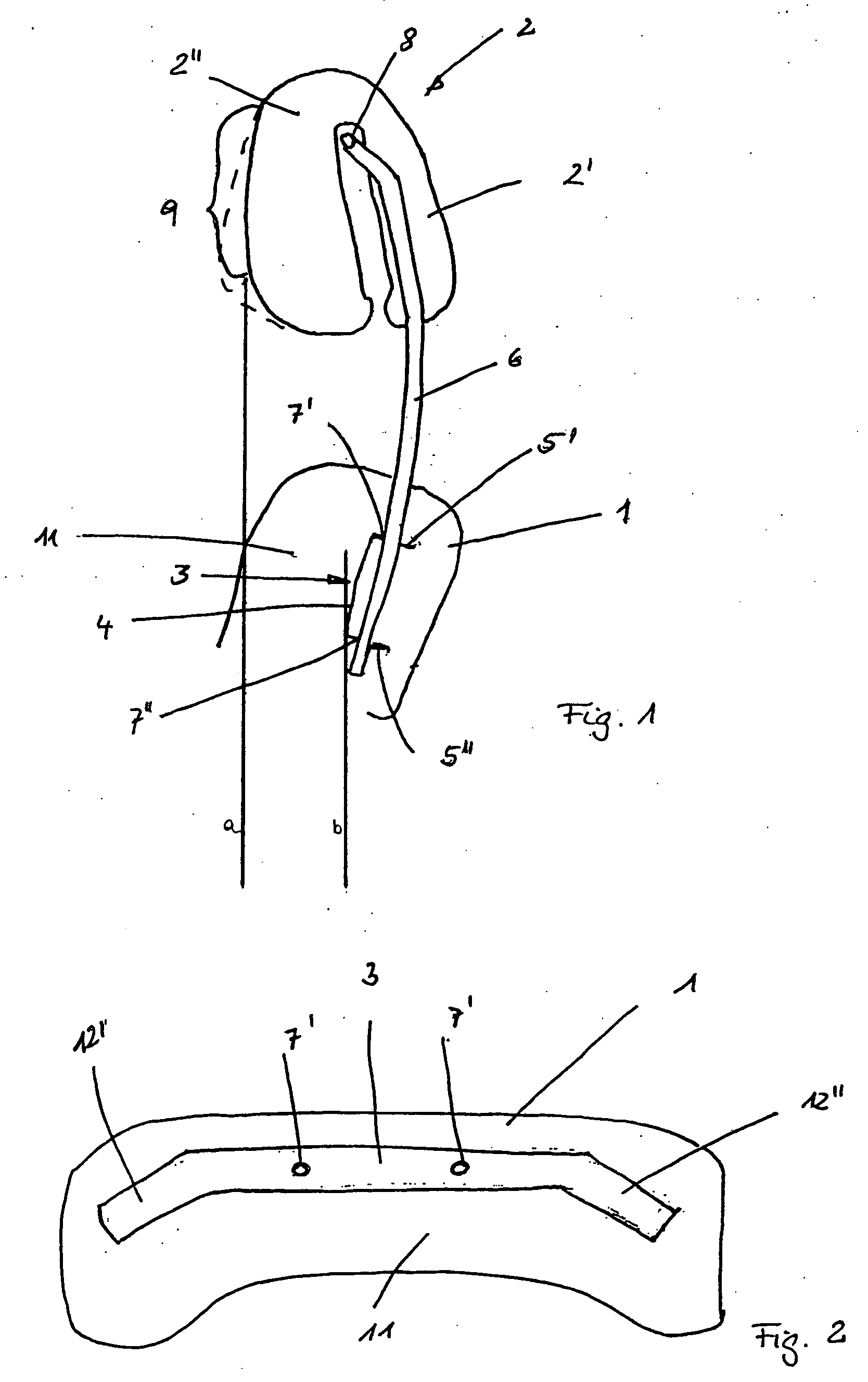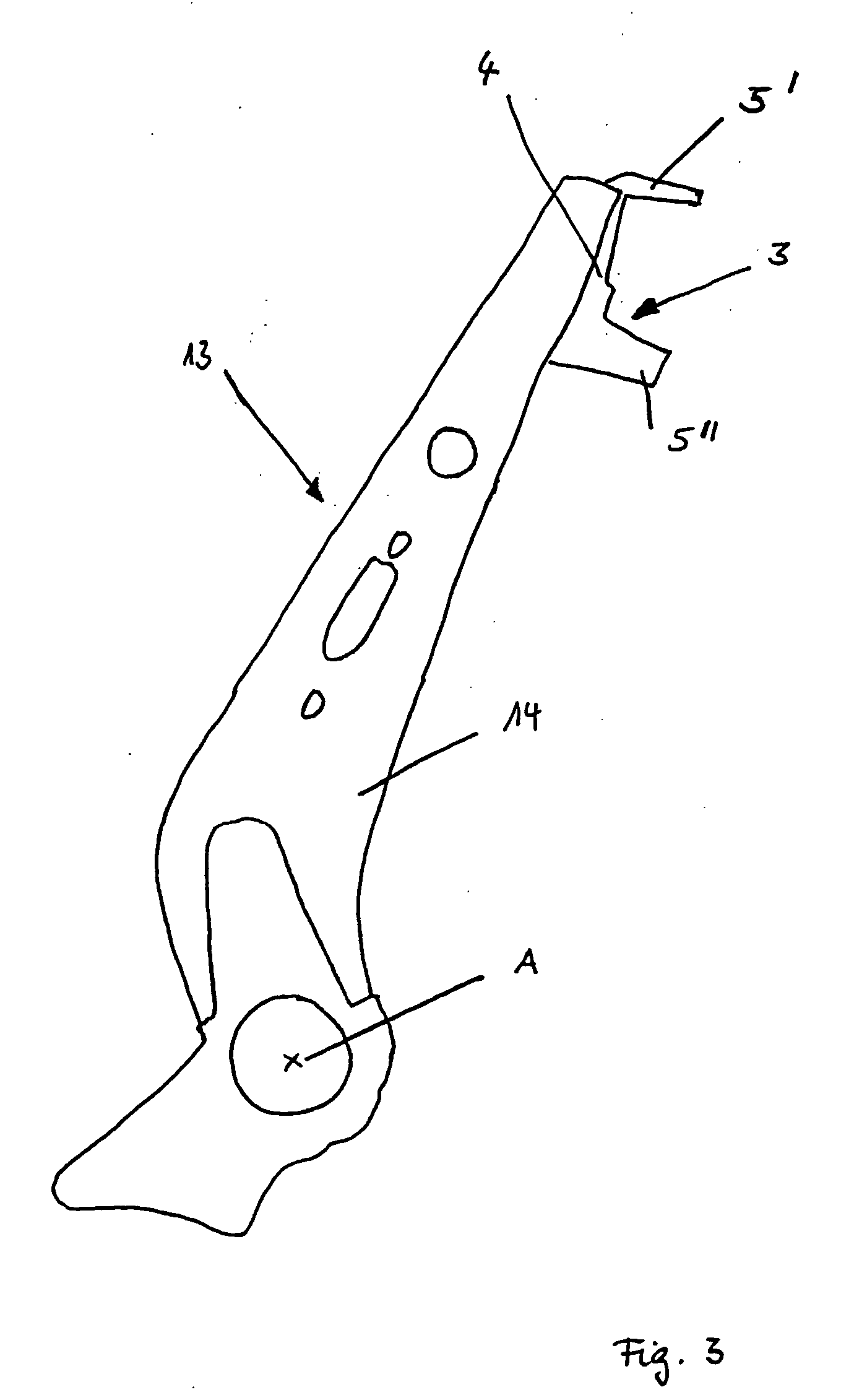[0013] The swivel axis of the impact plate on the head support can be so positioned that, in the event of an accident, the head of the vehicle passenger always comes to rest as close as possible to the swivel axis. As a result, the forces acting on the impact plate in the vicinity of the swivel axis are passed to the impact plate, whereupon small lever arms emerge. Because of the small lever arms, backward movement of the head is limited when the impact plate is displaced to the rear because of the redirected forces. As a result, the head is held in a
position lying as far forward as possible, and an unnecessary backward displacement of the head is prevented. The effect of the invention is also thereby reinforced by preventing movement of the head to the rear, especially in relation to the upper body of the vehicle passenger.
[0014] In contrast to the technology discussed at the outset, the invention has the
advantage of omitting a procedure for head support or parts of it in the event of an impact. As a result, the vehicle seat of the invention is, basically, simpler to manufacture and install. That entails significant cost advantages. In addition, no expensive control is necessary in the arrangement of the invention, which, in addition to the cost
advantage, represents an
advantage with regard to the reliability of the
system; in order to be effective, the construction of the invention does not have to move. It is constantly effective. Thus, by means of the invention, there is a constantly ready and very reliable
system available. In addition, it is also important that a non-moving system is much more simple to design with regard to its fatigue strength. During its lifetime, the head support is subject to other demands; for example, the head support frequently serves as a
handle for persons sitting in the rear to pull themselves up when exiting.
[0015] The connecting element to secure the head support to the seat back support can be constructed as a curve. For example, two rod-shaped connection elements can be provided which are aligned parallel to each other and which extend between the seat back support and the head support. In order to avoid any displacement of the head support relative to the seat back in the event of an accident, the connection elements can be produced from a high strength material, for example steel. In this way the connection elements can be prevented from deforming when, in the event of an accident, the head comes in contact with the head support after its movement to the rear. Naturally other materials are conceivable, like plastics and other metals.
[0016] The connection can be so designed that it permits a translational movement of the connection elements relative to the seat back support. It is also is so aligned, relative to the support, that, in the event of an accident, it is capable of supporting the head of a vehicle passenger in a position which is positioned forward relative to the upper body of the vehicle passenger. As a result, in an impact, a movement of the vehicle passenger to the rear can be arrested, and the head, in the end phase of the movement, does not move further backward relative to the upper body. Instead, the movement of the head is stopped at about the same time as the movement of the upper body. In other words, the arrangement of the invention ensures that the backward movement of a vehicle passenger in an accident is braked so that there is no relative movement between the head and the upper body. As a result, cervical vertebrae injuries can be avoided.
[0017] The curvature of the connection elements as well as their alignment relative to the seat back can be selected so that, independent of the position of the seat back, which for comfort reasons can be adjusted in its height as well as its inclination, as well as the head support, which also can be adjusted in height for comfort reasons, the head support is also so aligned relative to the seat back support that, in the event of an accident, a support of the head is assumed in a forward displaced position relative to the upper body. In order to guarantee that, the movement paths of the seat back and head support, the
radius of the connection elements, and the alignment of the connection elements to the seat back must be exactly matched to each other.
[0018] The seat back support can manifest a transverse
traverse which basically consists of a U-shaped profile. The transverse
traverse extends horizontally in the seat back and is placed on its upper end. It can serve, for example, to accept the connection elements.
 Login to View More
Login to View More  Login to View More
Login to View More 


